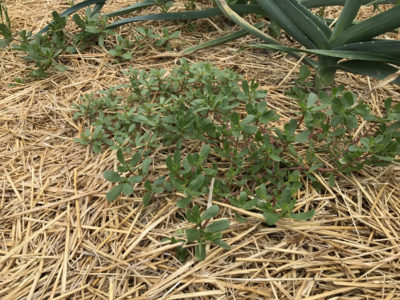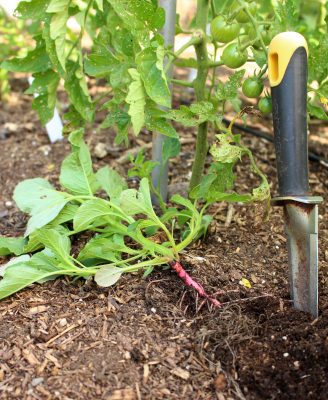Heat and Drought Come and Go
(The following is a adapted from my recent book, The Ever Curious Gardener: Using a Little Natural Science for a Much Better Garden, available through the usual outlets as well as, signed, from me at www.leereich.com/books.)
Plants’ Dilemma in Beating the Heat
Last week, with a spell of dry weather, I wrote about irrigation; then it rained. As I write, we’re experiencing searingly hot weather; thank me for the cooler weather that will surely follow.
The heat is hard on us humans, but pity plants in the heat of a hot, summer day. While I can jump into some cool water, sit in front of a fan, or at least duck into the shade, my plants are tethered in place no matter what the weather.
And don’t think plants enjoy extreme heat. High temperatures cause plants to dry out and consume stored energy faster than it can be replenished. Stress begins at about 86° Fahrenheit, with leaves beginning to cook at about 105°.
One recourse plants have in hot weather is to cool themselves by transpiring water. This loss of water from leaves can cool a plant by about 5° Fahrenheit. Over 90 percent of the water taken up by plants runs right through them, up into the air, exiting through little holes in the leaves, called stomates. Carbon dioxide and oxygen, the gases plants need to carry on photosynthesis, also pass in and out through the stomates.
All goes well provided there is enough water in the soil. If not, stomates close, transpiration and photosynthesis stop, and the plant warms. Even if the soil is moist, stomates might close in midsummer around midday if leaves begin to jettison water faster than the roots can drink it in.
So plants are put in a bind. Should they open their pores so that photosynthesis can carry on to give them energy, but risk drying out, or should they close up their pores to conserve water, but suffer lack of energy?
Beat the Heat with CAM
Enter cacti and other succulents (all cacti are succulents—that is, plants with especially fleshy leaves or stems—but not all succulents are cacti. The fleshy stems and leaves of succulents can store water for long periods. After more than a year without a drop of water, my aloe plant’s leaves still look plump and happy.
Besides being able to store water in their stems and leaves, jade plants, aloes, cacti, purslane, and other succulents have another special trick, Crassulacean Acid Metabolism (CAM), for getting out of photosynthesis of dehydration conundrum. They work the night shift, opening their pores only in darkness, when little water is lost, and latching onto carbon dioxide at night by incorporating it into malic acid, which is stored until the next day. Come daylight, the pores close up, conserving water, and malic acid comes apart to release carbon dioxide within the plant, to be used, with sunlight, to make energy.
I’ve actually tasted the result of this trick in summer by nibbling a leaf of purslane—a common weed, sometimes cultivated—at night and then another one in the afternoon. Malic acid makes the night-harvested purslane more tart than the one harvested in daylight.

C4 Beats the Heat Also
Another group of plants, called C4 plants, function efficiently at temperatures that have most other plants gasping for air and water. C4 plants capture carbon dioxide in malate, the ionic form of malic acid, which is a four-carbon molecule, rather than the three-carbon molecule by which most plants—which are “C3”— latch onto carbon. The enzyme that drives the C4 reaction is so efficient that C4 plants don’t have to keep their stomates open as much as do C3 plants. The C4 pathway also does its best work at temperatures that would eventually kill a C3 plant, and cells involved in the various steps are partitioned within the leaf for greatest efficiency.
C4 plants are indigenous to parched climates, but not uncommon visitors in gardens every- where. Corn is a C4 plant. (Cool climate grains such as wheat, rye, and oats are C3 plants.) Look- ing at my lawn, I see another C4 plant.  Hot, dry weather in August drives Kentucky bluegrass, a C3 grass, into dormancy. Not so for crabgrass, a C4 plant, which remains happily green.
Hot, dry weather in August drives Kentucky bluegrass, a C3 grass, into dormancy. Not so for crabgrass, a C4 plant, which remains happily green.
 Hot, dry weather in August drives Kentucky bluegrass, a C3 grass, into dormancy. Not so for crabgrass, a C4 plant, which remains happily green.
Hot, dry weather in August drives Kentucky bluegrass, a C3 grass, into dormancy. Not so for crabgrass, a C4 plant, which remains happily green. I also find some other C4 plants, in addition to corn, in my garden. As many vegetables and flowers flag, all of a sudden lambsquarters and pigweed, both C4 weeds (or vegetables, for those who like to eat them), appear as lush as spinach in spring.


Red-rooted pigweed
With a Little Help From Us Gardeners
Can we gardeners do anything to help out our plants in hot weather? Keeping the garden watered helps. Sprinkling or misting plants could keep them cool without their having to pull water up from the soil.
But the 30 gallons of water that runs up through a tomato plant in a season, or the 50 gallons that flows through a corn plant, is for more than just cooling these plants. It also carries nutrients from the soil into the plant. So it’s debatable how well a plant would grow with too much misting. And besides, wet plants are predisposed to disease.
A better alternative to sprinkling plants is to grow plants adapted to the climate and the season. Lettuce, spinach, peas, and radishes are not the plants to grow for harvest in August. At least not in full sunlight; that’s why, in midsummer, I grow lettuce in the shade beneath trellised cucumbers.
Tomatoes, cucumbers, peppers, melons, and squashes, although they are neither cacti nor C4 plants, can take the heat. And, of course, so can C4 plants like corn, purslane, and vegetable amaranth.

